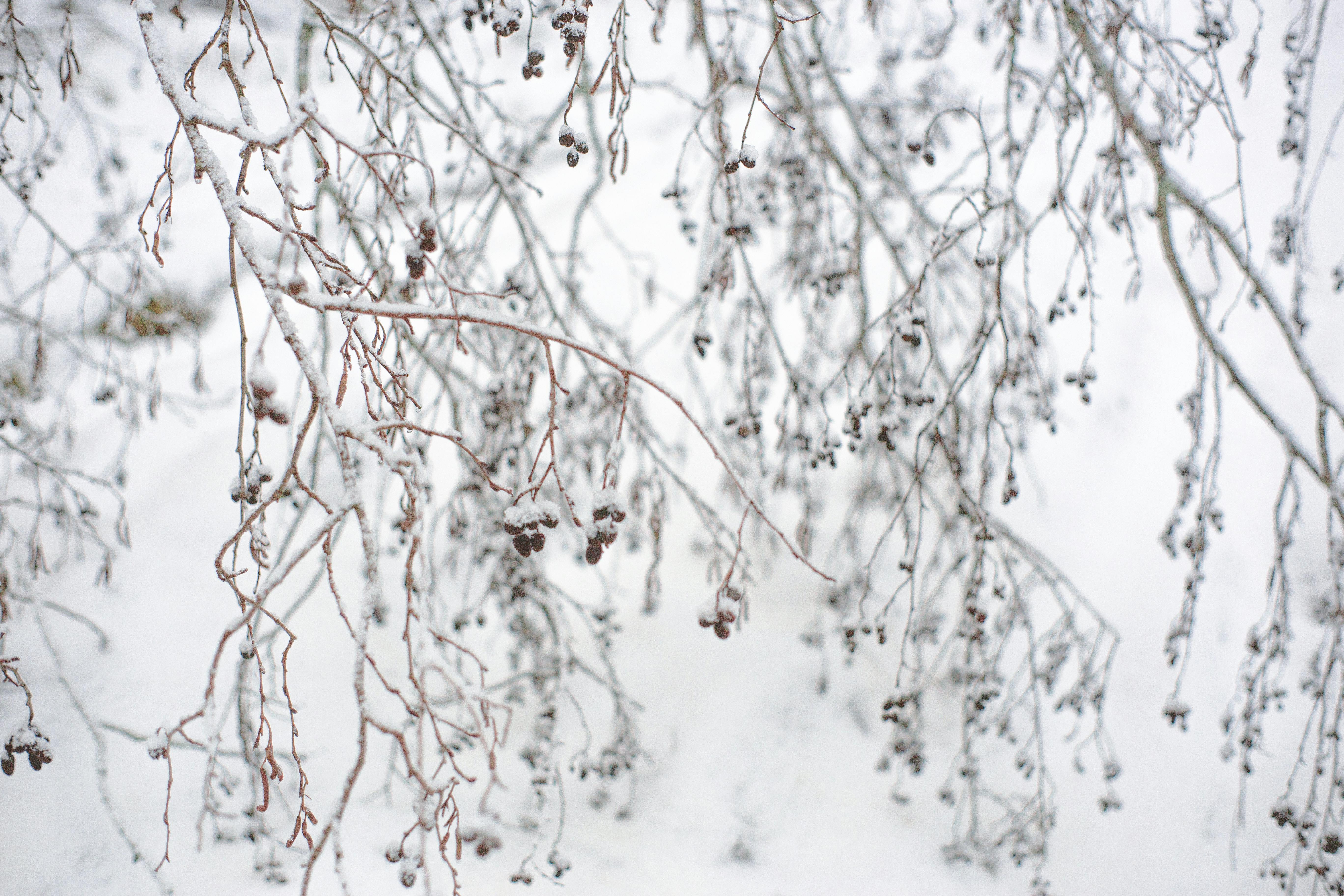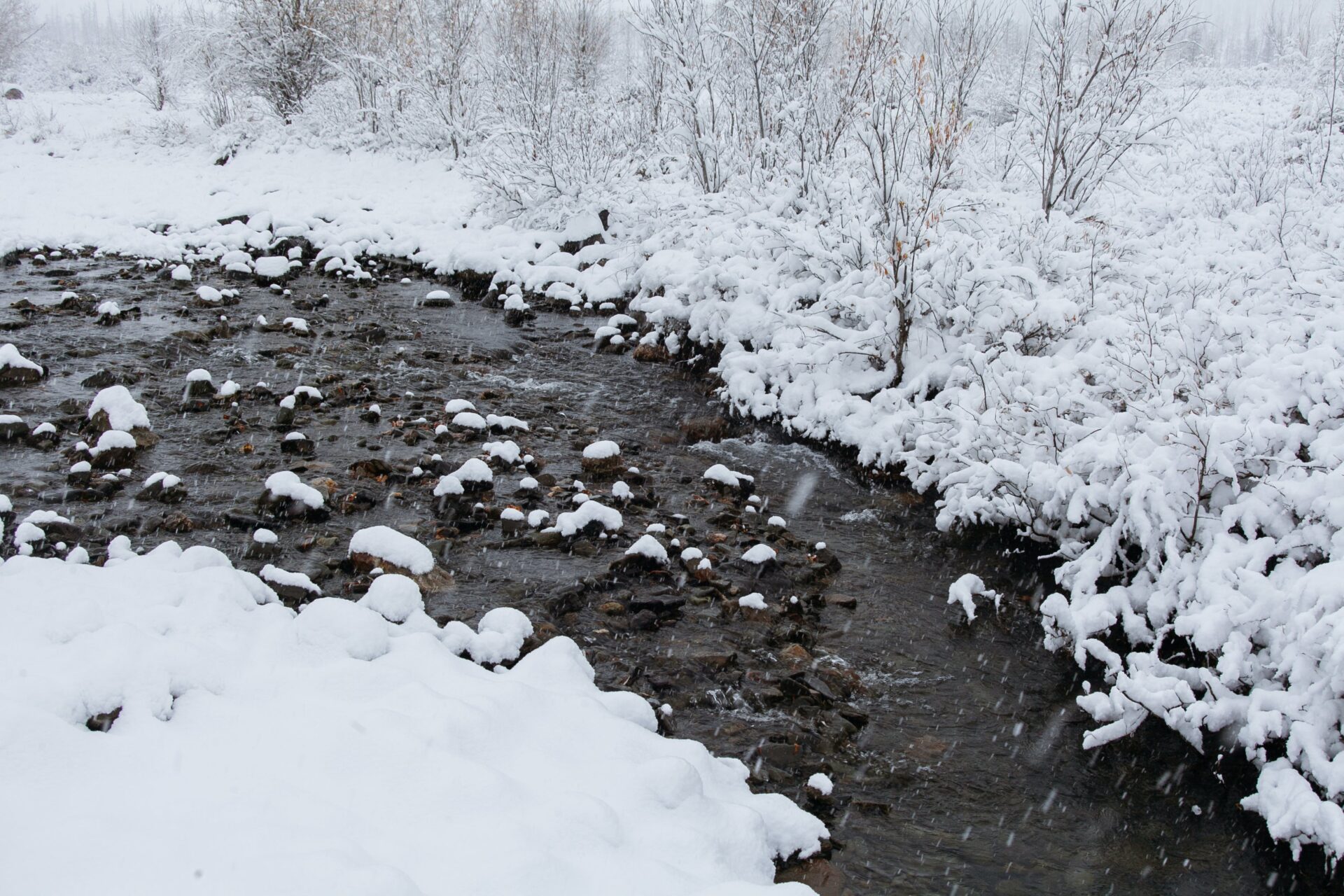Frost can be damaging to blueberry bushes, but there are a few steps you can take to protect your plants. One of these steps is covering your blueberry bushes for frost. This article will discuss the benefits of covering your bushes, the best materials and methods for doing so, and when you should cover them. By following these tips, you can help ensure that your blueberry bushes survive a cold winter.Frost is a weather phenomenon in which temperatures drop to or below freezing, typically overnight. Frost can significantly affect blueberry bushes as it can cause the leaves to become discolored and shriveled, and it can damage the berries by freezing the juices within them. If frost occurs during bloom time, the blueberry flowers may be killed off completely, preventing them from producing any fruit. As such, proper frost protection is essential for successful blueberry production.
Preparing Blueberry Bushes for Frost
Properly preparing blueberry bushes for frost is essential in order to ensure a successful crop. If you are growing blueberries in an area where there is a risk of frost, it is important to take the necessary steps to protect your plants from the cold. Here are some tips for preparing blueberry bushes for frost:
1. Mulch: Mulching around your blueberry bushes can help insulate them against extreme temperatures. Spread a layer of mulch around the base of each plant and be sure to keep it several inches away from the stem or trunk.
2. Prune: Pruning your blueberry bushes before winter can help them survive cold temperatures better. Cut back any dead or damaged branches and remove any weak or overcrowded growth.
3. Water: Make sure that your plants are well watered before the first freeze of the season. This will ensure that they have enough moisture to survive the cold temperatures.
4. Cover: If you live in an area with extreme cold temperatures, consider covering your plants with burlap or plastic sheeting to provide some additional protection against frost damage.
By taking these simple steps, you can help ensure that your blueberry bushes are properly prepared for frost and have a successful crop each year.
What Is the Benefit of Covering Blueberry Bushes for Frost?
Covering blueberry bushes during frost can provide many benefits. The most important benefit is that it can protect the plant from frost damage, which in turn can help increase yields. Frost damage can cause the fruit to be smaller or misshapen, and it can also weaken the plant itself. By covering the blueberry bush, you can help keep temperatures just above freezing, reducing the risk of frost damage and increasing yields.
Another benefit of covering blueberry bushes during frost is that it helps to keep moisture in the soil. This is especially important during periods of extended cold temperatures when soil moisture levels can quickly drop. Keeping moisture in the soil helps to promote healthier growth and better fruit production.
Covering blueberry bushes during frost also helps to protect against other types of weather-related damage, such as wind or hail damage. By creating a barrier around the plant, you can help to protect it from any potential harm that could be caused by strong winds or hail storms.
Finally, covering blueberry bushes during frost can also help to reduce disease risks. Many diseases thrive in cold temperatures and wet conditions, so by keeping temperatures slightly above freezing and limiting moisture levels in the soil, you can help to reduce the risk of disease infestation on your plants.
Using Floating Row Cover
Floating row cover is a lightweight fabric used to protect plants from frost and cold temperatures. It is typically made from spun-bonded polyester or a mix of polyester and nylon. This fabric can be draped over the blueberry bushes to create a protective barrier against the cold. When using floating row cover, it’s important to make sure the fabric is securely anchored around the bush so it doesn’t blow away in windy conditions. It should also be removed during the day when temperatures rise so that pollinating insects can access the flowers.
Using Mulch
Mulch is another way to protect blueberry bushes from frost and cold temperatures. The mulch should be applied around the base of each bush, making sure to cover any exposed roots. It’s important to use an organic mulch like straw, sawdust, or shredded bark since these materials will help insulate the soil and keep it warmer during periods of cold weather. Additionally, mulch helps keep weeds at bay and retain soil moisture, which can help keep your plants healthy all season long.
Using Wall O’ Water
Wall O’ Water is a protective covering made from plastic tubes filled with water that can be placed over blueberry bushes in late winter or early spring. The water in the tubes absorbs heat during the day and radiates it back out at night, creating a protective shield against extreme temperatures. While Wall O’ Water is more expensive than other methods of protecting against frost, it can provide an additional layer of protection for your plants when used in combination with other methods.
Using Burlap
Burlap can also be used to protect blueberry bushes from frost by wrapping them in burlap during periods of cold weather. This helps trap warm air around the plant while still allowing sunlight and air to reach it through small openings in the material. Make sure to secure burlap firmly so it doesn’t blow away in windy conditions. Additionally, remove burlap during times when temperatures rise above freezing so that pollinating insects have access to flowers on your shrubs.
What Are the Best Materials to Use When Covering Blueberry Bushes for Frost?
Covering blueberry bushes for frost is a great way to protect your plants from cold temperatures and harsh winter weather. Covering blueberry bushes with the right material can help ensure that your plants will survive the winter and produce a bumper crop of delicious blueberries in the spring. There are several materials that can be used when covering blueberry bushes for frost, including burlap, spun polyester fabric, and row cover fabric.
Burlap is a natural fiber material that is durable and breathable, making it an ideal choice for covering blueberry bushes for frost. Burlap can be draped over the plants to provide protection from cold temperatures and wind chill. It also helps to keep moisture in the soil, while still allowing air and sunlight to reach the plants.
Spun polyester fabric is another good option for covering blueberry bushes for frost. This fabric is lightweight and will not restrict air flow or sunlight from reaching the plant roots. It also provides good insulation from cold temperatures while allowing moisture to escape through its breathable properties.
Row cover fabric is made from spun polyester fibers that are woven together into a strong yet lightweight fabric. This material provides excellent insulation from cold temperatures while still allowing air and sunlight to reach the plant roots. Row cover fabric is easy to install as it can be cut into any shape or size needed to fit over your blueberry bush.
No matter which material you choose, make sure it is securely attached around each bush so that no gaps remain uncovered. This will help ensure that your blueberry bushes are adequately protected from cold temperatures in the winter months and that your plants will be healthy and produce an abundance of delicious berries in the spring!

Covering Blueberry Bushes For Frost
Blueberry bushes are a popular plant choice for many homeowners as they are easy to care for and provide a delicious and nutritious snack. However, blueberry bushes need special protection from frost if they are to survive the winter months. To ensure your blueberry bushes make it through the cold temperatures, they should be covered for frost at least four times throughout the season.
The best time to cover blueberry bushes for frost is when temperatures dip below freezing. This usually happens in late autumn and early winter when temperatures drop below 32°F (0°C). It’s important to cover your blueberry bushes before the temperature dips below this point, as any ice or snow that accumulates on the leaves may damage them. You should also check the weather forecast regularly, as unexpected drops in temperature can occur at any time of year and may require additional protection for your plants.
When covering blueberry bushes for frost, you should first remove any dead leaves or debris from around the plant. This will help ensure that air can circulate around the bush and prevent it from becoming too warm inside its protective covering. You should then lay down a layer of straw or hay to provide insulation against cold temperatures. Finally, place a tarp or other type of cover over the bush, making sure it is securely fastened so that no air can escape underneath it.
Once you have covered your blueberry bush, you should check it regularly throughout the winter months to make sure that no animals have disturbed its protective covering or that snow or ice has not accumulated on top of it. If either of these occur, you should remove them promptly and reapply your protective covering if necessary.
How Long Should Blueberry Bushes Be Covered For Frost?
Blueberry bushes should be covered for frost at least four times during winter months when temperatures dip below freezing point (32°F/0°C). It is important to check weather forecast regularly as unexpected drops in temperature may require additional protection for your plants. Once covered with tarp or other type of protective covering, check regularly throughout winter months to make sure nothing has disturbed its protective covering or snow or ice has not accumulated on top of it. If either occurs, promptly remove them and reapply protective covering if needed.
Pruning and Watering Blueberry Bushes Before Covering Them For Frost
It is important to prune and water blueberry bushes before covering them for frost. Pruning helps to reduce the amount of foliage that is exposed to the cold, which can help protect the plant from damage caused by frost. Pruning also helps improve air circulation around the plant, which can reduce the risk of disease and pest damage. Additionally, pruning helps reduce competition between branches, allowing more energy to be directed towards growth and fruit production.
Watering blueberry bushes before covering them for frost is also important. By watering the plants thoroughly before winter arrives, you can ensure that they have enough moisture present in their roots and stems to help them survive the cold temperatures. This moisture also helps protect against desiccation caused by windy conditions during the winter months. In addition, watering blueberry bushes before covering them for frost can help reduce the risk of root rot due to overly wet conditions during winter months.
When pruning and watering blueberry bushes before covering them for frost, it is important to take into account local weather conditions as well as how long the plants will be covered for frost protection. If possible, it is best to prune and water blueberry bushes several days prior to a forecasted hard freeze so that they have time to adjust to their new environment before being covered with a protective layer of mulch or fabric. Additionally, it is important not to overwater or overfertilize plants prior to a hard freeze as this could lead to further damage from freezing temperatures.
Finally, when covering blueberry bushes for frost protection it is important not to cover them too tightly or too loosely as this could lead to further damage or even death of the plant due to lack of insulation or air circulation. Instead, it is best practice to use lightweight fabric such as burlap or row cover that will provide adequate insulation while still allowing some air circulation around the plant’s leaves and branches. Following these steps will help protect your blueberry plants from severe cold temperatures this winter season!
How to Remove Covers From Blueberry Bushes After a Frost Event
Removing covers from blueberry bushes after a frost event is a necessary task that should be done in order to protect the plants from further damage. Frost events can cause damage to unprotected blueberries, so it is important to take steps to protect them. Covering the plants with frost blankets or covers is an effective way to insulate them and prevent further damage. However, once the frost event has passed, it is important to remove the covers in order for the plants to get adequate sunlight and air circulation. Here are some tips on how to properly remove covers from blueberry bushes after a frost event.
The first step when removing covers from blueberry bushes after a frost event is to identify any damaged areas of the plant. If there are any signs of wilting or discoloration, these areas should be treated with care when removing the coverings. It is also important to take note of any birds or insects that may have become trapped under the coverings during the frost event. These should be gently removed before proceeding with removal of the covers.
Once any damaged areas have been identified and any trapped animals have been removed, it is time to start removing the covers from the blueberry bushes. Care should be taken when doing this as any sudden movements can cause further damage to delicate parts of the plant. It is best to start at one end and slowly work your way around, gently lifting each cover off of its respective bush as you go along. Once all of the covers have been removed, it is important to inspect each bush for any signs of further damage caused by the frost event.
After inspecting each bush for damage, it is important to discard any used coverings in an appropriate manner so as not to cause harm or contamination in your local environment. The blueberry bushes can then be watered and fertilized if needed, and allowed some time in direct sunlight before covering them again if necessary for future protection against cold temperatures or frost events. Following these steps will help ensure that your blueberries remain protected throughout all seasons and will help ensure their health and productivity year-round!

Conclusion
Covering blueberry bushes for frost is an important step in protecting them from winter weather and ensuring a successful harvest. Depending on the climate and the severity of the frost, you can choose from a variety of methods to protect your plants, including mulching, sprinkling water on them, or using a cover.
If you live in an area where temperatures drop below freezing and there is a risk of frost, covering your blueberry bushes is essential to make sure they survive the winter months and yield a bountiful crop. By taking this extra step to protect your plants during cold weather, you can ensure that they will stay healthy and thrive.
Finally, it’s important to remember that any form of frost protection should be done regularly throughout the winter season as temperatures fluctuate. Stay alert for potential signs of frost damage and take action when needed so that your plants remain healthy and productive all year round.



